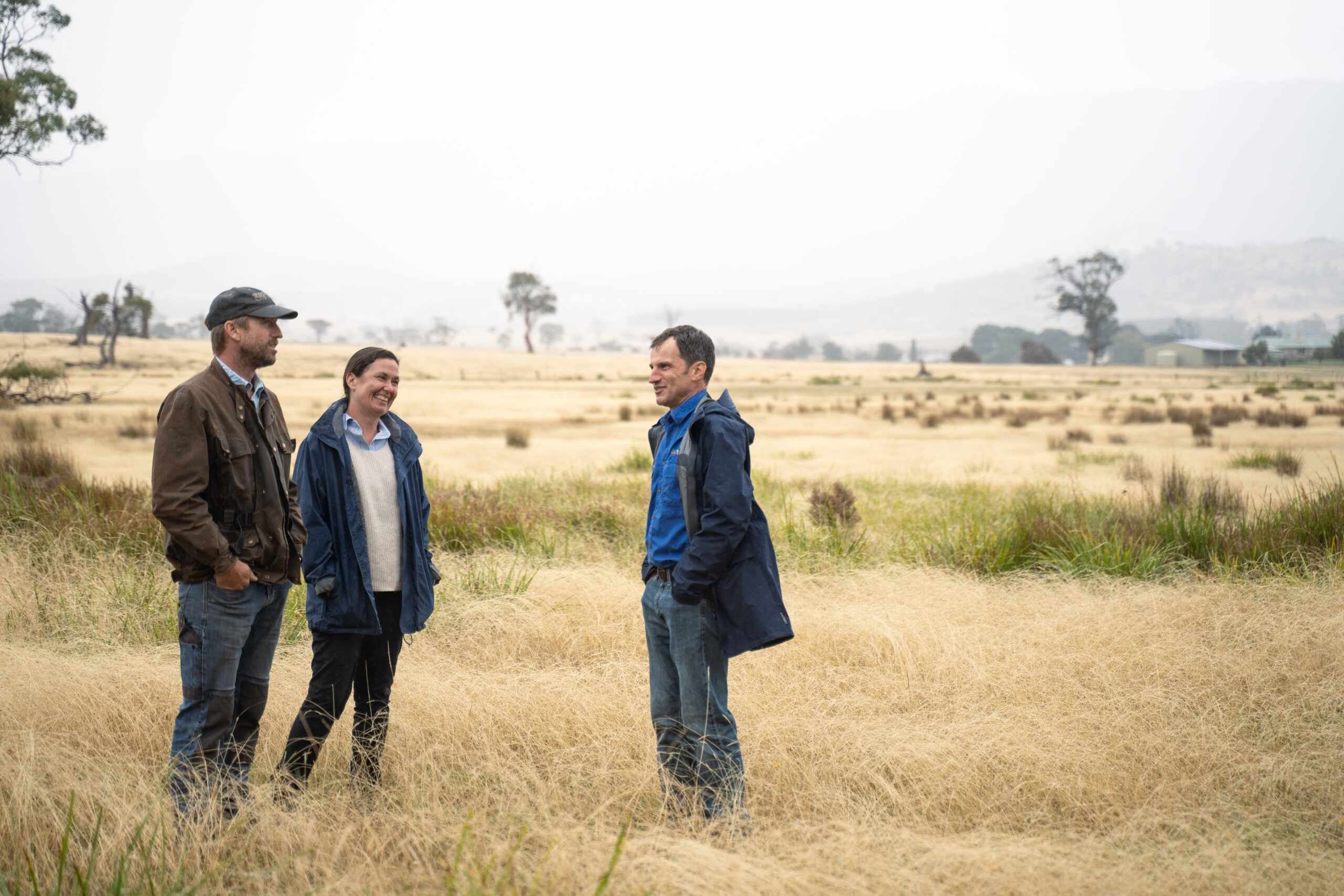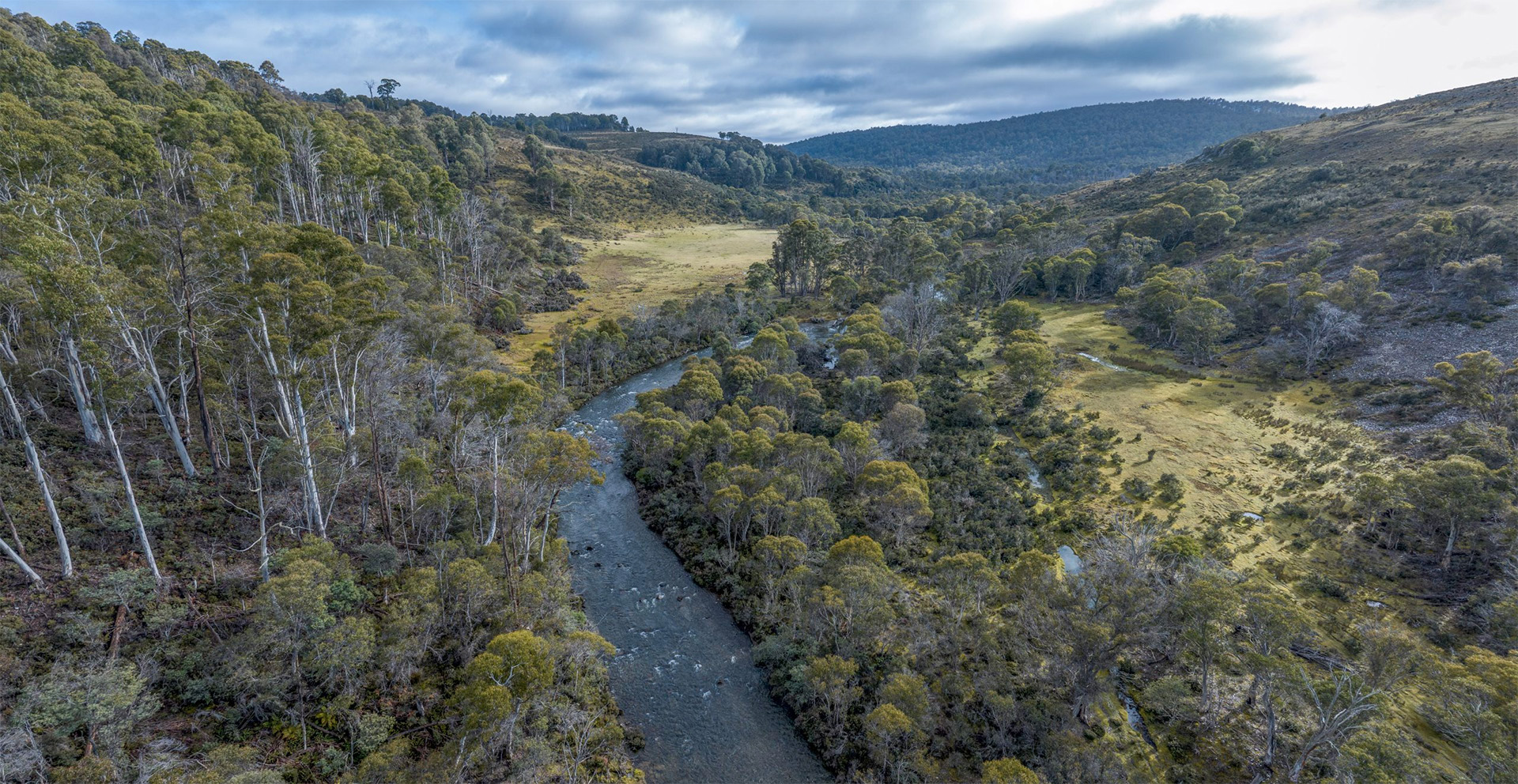Australia’s current estate of protected areas (National Parks and State Reserves) is no longer sufficient to protect and maintain healthy wildlife populations. Recent research also shows that while big patches of intact habitat continue to be vitally important for wildlife, small patches of suburban bush are often equally critical for the survival of rare and endangered species. Every bit counts!
That’s where you come in. The restoration and conservation of habitat for wildlife on private lands will be necessary to halt and hopefully reverse trends of biodiversity loss. But where should you start? The sheer volume of information on managing land for wildlife can be intimidating. What’s more, there are typically numerous approaches to tackling threatening processes like weed invasion or erosion and the technology available for combatting such challenges is always evolving. The purpose of this guide is to distil some of that information and provide a one-stop-shop for land management advice.
Rather than reinventing the wheel, we’ve gathered together our favourite resources from a range of environmental organisations and provide links to them below. These are grouped into themes, but some resources could apply across multiple categories. The advice given is sometimes general in nature or may otherwise be very specific to a particular region. Even among ecologists and restoration practitioners, techniques on what to plant, when, where and how can differ. So think carefully about which tips apply to you and your property.
Many Tasmanians are already doing their bit to restore habitat for wildlife on their property. If that’s you (thanks!), consider setting up a camera trap to monitor your hard work. A consistent problem in the science of restoration ecology is a lack of long-term interest and funding that allows for monitoring restoration outcomes. Knowing which species colonise newly created or protected habitat and when, could help inform the design of future conservation efforts.
NATIVE PLANTS AND REVEGETATION
Here you will find plant species lists that are both native to your municipality and relatively easy to cultivate or acquire from native plant nurseries. Lists include both common and uncommon plants but are not exhaustive. Further plant options are available elsewhere on the Understorey Network website along with information on how to propogate them.
An excellent video playlist on restoring habitat for woodland birds, covering all aspects of revegetation including planning, fencing, site preparation, tree guards and turning farm dams into bird havens.
A quick reference guide to revegetation in Tasmania, including great summaries on weed control, soil prep, protecting and guarding plants, fertilising and maintenance. In addition to the methods described here, we’d also suggest the option of scalping as a method of weed control and more recent designs of plant guards (cardboard and larger wire mesh for mitigating grazing by deer and possums).
A summary of restoration efforts in the Tasmanian Midlands Biodiversity Hotspot, including information on planting design and methods. For more detailed, and freely accessible technical reports and scientific papers on restoring habitat for wildlife in this region, see here.
The National Standards for the Practice of Ecological Restoration, developed by the Society for Ecological Restoration Australasia (SERA) and its partner organisations, aims to shift humanity’s role from causing degradation to conserving and healing indigenous ecosystems. The document outlines restoration principles, methods, and steps for planning, implementing, monitoring, and evaluating projects across a wide range of scales, targeting improved restoration practices in various sectors across Australia’s land and water ecosystems.
FENCING & GATES
This comprehensive guide includes information on how to prepare, construct and maintain fences that keep wallabies, possums and wombats from eating your veggies. You’ll also find guidance on how to build wombat gates, so that they can easily pass through your fences without resorting to digging destructive holes.
This report found that a slight variation on the design of “wombat gates” in the document above (Wallaby proof fencing) was a great solution to allow wombats to pass through fences without causing damage. Importantly, though, further changes in design are encouraged such that young wombats and their mothers are not separated by gates.
HABITAT ELEMENTS
Fallen Wood
If you need to buy firewood, we encourage you to do so from an FAA member who is assessed by audit to comply with the Code of Practice for Firewood Suppliers.
Tree Hollows
This brochure provides guidance on preserving and creating tree hollows for wildlife habitat. It emphasises protecting the root zone of trees from disturbance, outlines the characteristics of suitable wildlife hollows, and suggests methods to promote their natural development. The importance of protecting “recruitment” trees, which can potentially form hollows in the future, is highlighted, along with the use of nest-boxes and techniques like hollow carving.
Waterways
This guide provides practical information for landholders to manage waterways effectively while dispelling common misconceptions about river management. It covers issues such as bed lowering, bank erosion, riparian revegetation, and livestock management. There is also a step-by-step process for conducting works near watercourses.
Rocks and Outcrops
WEEDS
When controlling gorse and other weeds, consider that these plants are often used by native wildlife for nesting, denning and shelter from the elements. This is especially so in landscapes that have been cleared of native vegetation – weeds may be the only habitat left! Some resources below note that the best time for weed control is in spring and summer when plants are actively growing. From an animal-perspective, however, we encourage the removal of weeds in the non-breeding season (i.e., winter and autumn) if it is at all possible. Similarly, we suggest removing large weed infestations in a gradual manner that allows animals time to find a new home and provides opportunity to replace weeds with structurally similar native plants. Chemically spraying weeds and leaving them in-situ to degrade over time may also be an option.
Identification
Your first stop for identifying Tasmanian weeds should be the Department of Natural Resources and Environment’s Weeds Index. You’ll find their list of declared weeds and control methods here. But not all of our important weeds have been declared; you’ll find some of those species here.
The Weeds Australia web app from the Centre of Invasive Species Solutions (2021) is also an incredibly handy resource that you should definitely check out. Simply search for the weed you are interested in and a comprehensive profile including the species origin, preferred habitat, how it spreads, an image gallery and current distribution will be displayed. Don’t know what weed you’re after? They’ve got you sorted there too with an interactive key containing 442 Australian weeds.
Finally, this quick guide produced by NRM South and reprinted by TasNetworks (2021) is a great visual resource to scroll through until you’ve found the weed you are looking for: Weed Warning – A Guide to Environmental and Agricultural Weeds of Tasmania
Spanish heath
The Derwent Catchment Project team have developed a series of short videos on some of Tasmania’s most economically and environmentally important weeds. In this video, learn how to control infestations of spanish heath.
In this video, Phil Hrstich from the Devonport City Council describes how to use herbicide for the effective control of Spanish Heath.
Gorse & Broom
In this video from the Derwent Catchment Project, learn how to control broom and gorse using chemical and mechanical methods.
Blackberry
In this video from the Derwent Catchment Project, learn how to control blackberry infestations.
Willows
This video from the Derwent Catchment Project describes why willows are such a problem for Australian waterways and methods for their removal.
Thistles
In this video from the Derwent Catchment Project, learn how to control some common species of thistle.
EROSION
This document is an oldy but a goody. The principles of identifying dispersive soils, soil erosion and its control are explained in detail.
Check out page two of this guide for some causes of bank erosion of waterways and possible management options.
FIRE
This document was edited for a Tasmanian audience in response to the 2013 fires that ravaged the Tasman Peninsula. It includes practical advice on species selection and if, how, when and where to plant on fire-affected land.
Did you know that some plants can reduce the speed and heat of an approaching bushfire? This document lists the flammability of different species that are common in Tasmania to help you design a more fire-resistant garden.
INTRODUCED AND INVASIVE SPECIES
Feral Cats
The PestSmart website is a brilliant resource for planning, managing and improving on feral species control programs. The site has tailored information to support land managers, farmers and producers to control cats, mice, deer, rabbits and hares.
The TassieCat website is part of a state-wide initiative to promote and facilitate responsible cat ownership and management in Tasmania. This should be your first stop if you are about to bring a new furry friend home. You’ll find information on cat-containment solutions as well as the impacts of cat-borne disease on human and wildlife health.
Rodents
Rabbits and Hares
Be sure to checkout the PestSmart website’s glovebox guide to managing rabbits.
Fallow Deer
In this toolkit you’ll find a standard operating procedure for ground killing of deer, a humaness index for deer management and a short guide on identifying fallow deer.
NEST BOXES
Here you’ll find a schematic for building a nest box for one of Australia’s rarest birds, the forty-spotted pardalote. If you live on the Tinderbox peninsula or Bruny Island, constructing and monitoring a nest box may be one way for you to help bring this species back from the brink of extinction.
THREATENED SPECIES
For management and conservation advice on Tasmania’s threatened species, from butterflies to buttercups, visit the state government’s Threatened Species Link. Here you can also conduct an area search to see which threatened plants and animals may be close to you.

